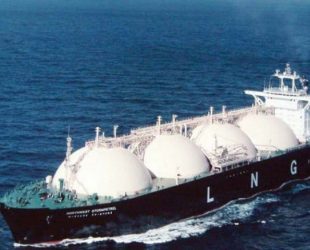The oilfield services sector is usually the one to suffer the most during an oil and gas industry downturn. This last crisis has been no exception in most respects. Drilling fell sharply this year in response to the demand slump in both oil and gas, budgets were cut and exploration plans shrunk. There was talk we might have already seen peak oil demand. The situation begged the question what happens to oilfield services beyond oil?
To be fair, the world will need tens of millions of barrels of oil for decades to come, so “beyond oil” is a bit misleading. Yet peak oil demand may well be over, which means a shrinking market for these companies. And the largest among them are already preparing for this shrinking market.
Baker Hughes, for instance, is no longer a purely oilfield services provider and hasn’t been for a while now. OFS is just one of four product companies under the parent’s umbrella, which also include thinks like machinery—for the energy industry—hydrogen technology, geothermal, and carbon capture and utilization, not to mention digital tech. Baker Hughes is also pursuing a lead role in additive manufacturing—the technology that could transform the supply chains of a lot of industries.
Baker Hughes is not alone. The other two Big Three majors are also pursuing a digital future as well as a transfer of their expertise in other fields. Schlumberger recently restructured its business to streamline it and while most of its focus is still on oil and gas, the company is making a big bet on cloud and edge computing, and automation. According to chief executive Olivier Le Peuch, the growth of this business will outpace the growth of Schlumberger’s oilfield services business in the next few years.
Halliburton is also going digital at a fast pace: the company recently sealed a deal with Accenture to digitize its manufacturing operations, stating as its goal to provide better services for its clients while also driving higher returns for shareholders.
The pivot to technology is a smart decision for the Big Three at a time when there is also growing pressure on the energy industry—as well as other industries—to cut their carbon footprint. A post-oil era is still far in the future and will require a number of major breakthroughs, as Tyler Fowler, marketing manager for Baseline Energy Services, told Oilprice. But, he added the oilfield services industry is changing and it will continue to change in response to the changing environment within and outside the industry.Related: Oil Jumps On Significant Crude Inventory Draw
“The OFS companies that survive and thrive in markets like onshore U.S. will be those that likewise adopt new technology and are already moving forward with a cost-competitive, more eco-friendly business model built-in,” Fowler said.
Digital is the way forward for OFS companies, according to Marcus Wagner, CEO of finance and accounting firm AccTwo. Cloud computing, automation, outsourcing of services are, or should be, priorities for this segment for the industry to reduce inherent volatility that makes it vulnerable to market shocks, which we saw this year again. The above will help companies streamline their business operations, making them more nimble in the next crisis.
“Beyond these operational changes, we see service diversification, geographic dispersal, the movement toward subscription revenue models, and a prioritization of services that achieve ongoing cost reductions for upstream operators as key attributes of the successful OFS companies in a post-oil future,” Wagner told Oilprice.
But it’s not just digital technology that will provide oilfield service companies with a future. Because of their expertise in energy production technology, they may become indispensable in the world’s drive to reduce greenhouse gas emissions.
In fact, the oil and gas industry is already doing a lot of good work in this respect, according to Richard Leaper, VP Sales and Marketing at Milestone Environmental Services, an oilfield waste disposal services provider.
“As an example, slurry injection is widely used as a waste disposal method in the oilfield, and is a profoundly carbon-negative activity,” Leaper told Oilprice. “Slurry injection involves blending oil-bearing waste from drilling, completion, and production streams, and sequestering it roughly a mile below the water table. This has a major advantage in terms of reducing emissions (of volatilized oil compounds) over other common disposal methods like burying waste in shallow reserve pits or landfarming it.”
There is also flaring reduction, methane leak detection—an area of growing interest for environmental monitors and reporters—as well as water recycling and fuel substitution, among others, according to Leaper, who noted the future will bring more opportunities than challenges for the oilfield services industry as the world moves towards a less emission-intensive future.
Basically, what oilfield service providers need to do to ensure their business sustainability is the use their core competencies and expertise, acquired and developed in oil and gas to move away from oil and gas, and into new business areas.
Carbon capture, hydrogen production, and natural gas emissions are among these areas, according to Atul Prasad Gupta and Pankaj Bukalsaria from Acuity Knowledge Partners.
“These companies could also look at other energy-related businesses such as e-mobility and bio and clean fuels, or at frontier businesses such as recycling, water management and robotics,” they told Oilprice.







